|
|
|
Really Old Hebrew When we read in translation, the words have been chosen by a translator. When we learn to read Hebrew, it is exciting to read straight from Scripture in the original language! But what about those words? Where exactly does a Bible publisher get them? There are no longer tablets safely guarded in the Ark of the Covenant. No one has seen anything signed by Moses, David, or Malachi for a very long time. Not even the British Library has one single Bible autograph. The Biblical Hebrew 2 textbook follows the adventure of the preservation, transmission, and translation of the Hebrew Scriptures, because knowing this, like knowing Hebrew, can strengthen our faith and our understanding. So what Really Old Hebrew is there? |
||||
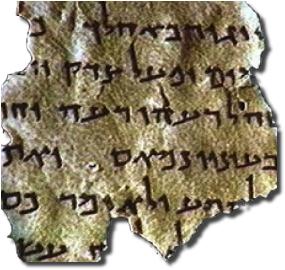 |
||||
Gezer Calendar One of the oldest known pieces of Hebrew writing is the Gezer Calendar, so named because it was found in the ruins of Gezer, a city whose repeated ruination you can read about in the Bible (by Joshua at Joshua 10:33, by Pharaoh in 1 Kings 9:16). King Solomon fortified it after his new bride received it as a wedding gift from her dad (1 Kings 9:15). Today, at the Tel Gezer Israeli National Park (or at right) you can see gates Solomon built for the town. The Gezer Calendar is from about that same time and records seasonal farm work on limestone: maybe it was a schoolboy exercise, maybe a folk song, maybe even the taxman’s record keeping! It reads something like: Two months of olive harvest Written vertically at the lower left is "Abijah," perhaps the scribe's name, which means "The Lord is my father." If you are already learning Biblical Hebrew, you will notice the letters used in the time of Solomon were the early Hebrew characters, replaced in the days of Ezra with the "square" Hebrew characters in use today. |
||||||
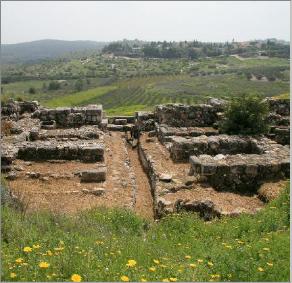 |
||||||
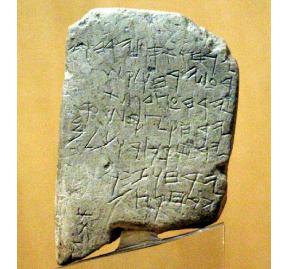 |
||||||
Mesad Hashavyahu Ostracon Another farming document, but closer to Biblical text, is the Mesad Hashavyahu ostracon. An ostracon is a piece of broken pottery, which the ancients commonly used for note paper. This one is from about 625 BC, when Josiah was king of Judah. It is a complaint from a reaper to the governor that his clothes got confiscated and kept way too long, indirectly referencing the Biblical injunction (Exodus 22:26) against keeping a man’s cloak overnight. |
||||
 |
||||
Ketef Hinnom Silver Scrolls The oldest extant citation of a Bible verse may be on silver scrolls found at Ketef Hinnom in Jerusalem in 1979. These tiny silver scrolls from a burial chamber are touchingly inscribed, “May the Lord bless you and keep you. May the Lord make His face to shine upon you and grant you peace.” Sound familiar? In Numbers 6:24-26 we read these words in the blessing with which God asked Aaron to bless the His people. The Ketef Hinnom scrolls are about 2600 years old. |
||||||||
 |
||||||||
Nash Papyrus Before the discovery of the Dead Sea Scrolls in 1946, the Nash Papyrus from about 150 BC was the oldest known Hebrew manuscript. It seems to be a bit of an Egyptian Jew’s daily prayers with the Ten Commandments and Deuteronomy 6:4, Shema Yisrael. The Hebrew characters are the familiar "modern" ones. |
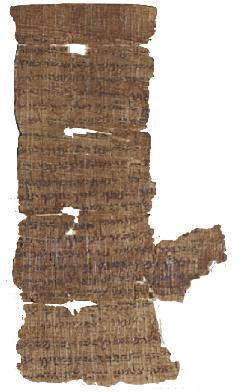 |
|||
Dead Sea Scrolls The most famous of old Hebrew manuscripts were found hidden in caves. After the initial accidental discovery, more Dead Sea Scrolls were avidly sought, bought and sold, jealously guarded, wrangled over by nations, pored over by scholars, deciphered, pieced together, carbon dated, and transcribed. Eventually, the collection of complete scrolls and thousands of fragments on parchment, papyrus, and bronze was recognized to include documents from the Bible, Apocrypha, and other religious literature from before the time of Christ in Hebrew, Aramaic, Greek, and Nabatean. Bits of every book of the Hebrew Scriptures except Esther were found. These versions were one thousand or more years older than the next oldest copies, the Aleppo Codex and Leningrad Codex. So they were compared. Had copyists made untold changes and errors? Was our Bible like one big game of telephone? Turned out the Jewish scribes had done one fine job in those thousand years. The big news was that nothing much had changed. |
||
 |
||
Aleppo Codex Every bit of Really Old Hebrew mentioned so far became known to scholars in the 20th century. And even if you put them all together you would not get a Bible out of them. So what has everyone been reading? For centuries the prime Hebrew Biblical manuscript has been the Aleppo Codex, a document steeped in mystery and adventure. A codex is handwritten pages bound as a book, rather than as a scroll. While a Torah scroll for reading publicly in synagogue services has only consonants, Bible codices with vowel pointing have been produced since the early Middle Ages. The Aleppo Codex was written in Tiberias in the 10th century, captured by the Crusaders, ransomed by Jews, taken to Egypt by camel caravan. It was transferred to the Aleppo, Syria synagogue where it survived a Mongol trouncing of that city under Tamerlane in 1400. Carefully guarded and highly regarded for centuries, the Aleppo Codex fell prey to Syrian rioters enraged by the creation of the modern state of Israel in 1947. It disappeared for ten years, hid in a washing machine, then turned up in Israel, with new secrets and stories, and missing one third of its pages. |
||||
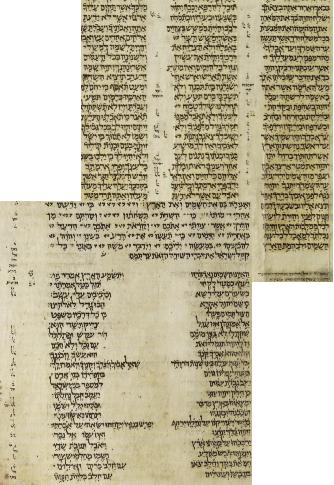 |
||||
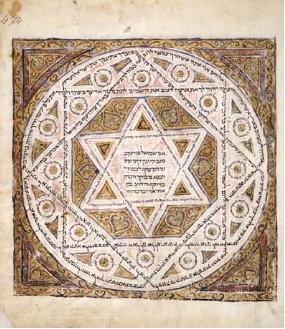 |
||||||
Leningrad Codex That left the distinction of oldest complete Bible manuscript to the Leningrad Codex of 1008. The beautifully preserved Leningrad Codex began life in Cairo 1000 years ago, resides now in the National Library of Russia in St. Petersburg, and is the basis of modern Hebrew Bibles and Protestant translations. Orthodox churches use the Septuagint Greek translation of the Hebrew Scriptures. Roman Catholics generally favor the Latin Vulgate as a foundational text. The Aleppo and Leningrad codices are the oldest complete copies, but far from the only vintage texts. There is the Cairo Codex from 895 that contains only the Prophets, and the Leningrad Codex of the Prophets from 916. The British Museum Codex is from 950 but has only part of the Pentateuch. There are, besides these, thousands of Bible manuscript fragments around the world and artifacts with ancient, non-Scriptural Hebrew. So, should we be content to obey the Word of God when our Bibles are based on a manuscript from the time of the Vikings, rather than the time of the Philistines? Finding the Dead Sea Scrolls, transcribed about 1000 years before the Aleppo Codex, helped answer that question. In Biblical Hebrew 2, we follow the fascinating and heartening reasons why what we have is not terribly old, but nevertheless trustworthy. (hint: it has something to do with this page...) |
||||||
 |
||||||
copyright ©2022 Alef Press |
Gezer calendar and Gezer gates photos © HolyLandPhotos.org , used by permission |
||